
views
Identify your audience.

A good, effective presenter knows who they’re talking to. Are you talking to a class filled with bored teens, or a seasoned panel of experts? By knowing exactly who you’re talking to, you can tailor your presentation specifically to your audience, making it more dynamic and memorable. For example, if you’re presenting at a microbiology conference, you won’t have to define any scientific terms that are well-known in the field. If you’re speaking to a less-informed audience, it might help to sprinkle some extra definitions into your presentation. If you were pitching to a group of investors, you’d want to provide some background information about yourself and your company.
Research your topic thoroughly.

Your presentation can only be as good as your research. Pretend you’re sitting in the audience—how would you feel if someone’s presentation skipped over important points or seemed to be missing valuable chunks of information? Chances are, you wouldn’t take it too seriously. Really knowing your stuff helps make your presentation as clear, direct, interesting, and understandable as possible. Doing your research is especially important if there’ll be a Q&A session at the end of your presentation.
Tell a story with your presentation.

A story-style presentation is more likely to stick with audience members. When you just spout off information, the average audience member will collect the info in their frontal lobe, which fills up pretty quickly. Turning your presentation into a story allows the audience to use their brain’s memory and emotion centers to process the information, which boosts their chances of remembering it later on. Here’s an example: if you were giving a presentation about breast cancer prevention, you could start off with a story about a woman’s trip to the doctor’s office rather than rattling off a bunch of statistics. You might describe a day in the life of a low-income household instead of jumping into a lot of economical terms and poverty statistics.
Begin your presentation with a question.

This is a great way to connect with your audience. Whether you’re in class, at a business meeting, or at a conference, your audience will want to know what to expect. Asking a question will connect you with your audience right from the get-go, and help them feel like they’re a part of your presentation. Try tailoring your opening question to your presentation topic. For instance, if you’re discussing the importance of charity and giving back to the community, your opening question could be “What would you do with a million dollars?”
Optimize your PowerPoint.

A good slideshow needs to be brief and well-balanced between text and visuals. Believe it or not, short presentations are much more professional than longer ones; in fact, consulting professionals suggest condensing 20 slides of a Powerpoint to just 2 slides. Pairing the text on your slides with a dynamic image is another great way to make the most out of your slideshow presentation. Here are a few other rules of thumb to keep in mind: The 5/5/5 Rule: Limit each slide to 5 lines of text, capping each line off at 5 words. Also, don’t have more than 5 text-filled slides after one another. Choose fonts that are simple, sleek, and easy to read. Extravagant fonts may look fun, but they’re a pain for audience members to read. Contrast your slide background and text color so audience members have an easy time reading what’s on the screen. Keep your transitions as simple as possible—big loops, fly-ins, and other fancy animations won’t add anything to your presentation.
Draft notecards for yourself.
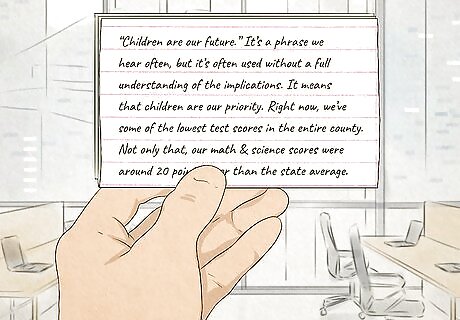
Notecards can provide useful reminders during the presentation. They’re not meant to be a replacement for good practice and memorization, but you can use them to keep you on track. Jot down only the most important parts of your presentation, so you aren’t relying on your cards as a script. Always write in big, easy-to-read letters. You don’t want to be squinting at your notecards during the presentation!
Practice as much as you can.
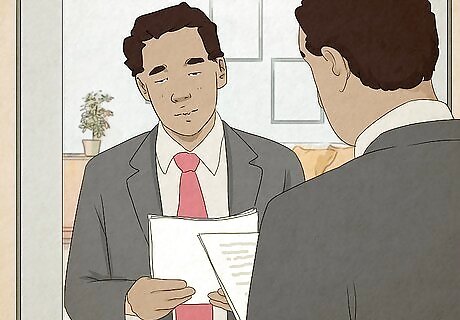
Even experienced public speakers take time to practice before a big event. Why? Because practice really does make perfect! Plenty of practice helps you nail down the most important parts of your presentation, and helps you really drive the message home. Plus, practice sessions help keep your presentation within a certain time limit. Grab a timer or phone whenever you run through your presentation. That way, you can figure out how long your speech is overall, and which parts are taking up the most time.
Pause instead of using filler.
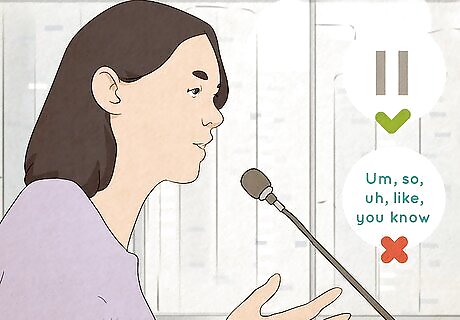
“Um”, “so”, “uh”, “like”, and “you know” are some common filler offenders. While these words feel helpful in the moment, they don’t do anything to boost your credibility. Instead, use that blank moment to just pause and recenter your thoughts. You can try practicing pausing in your regular conversations, too! Chances are, you probably sprinkle in a few ums and uhs when talking with friends and family. Try recording yourself the next time you practice your presentation. Then, listen back and see how many times you use filler words.
Make your voice dynamic and engaging to the audience.
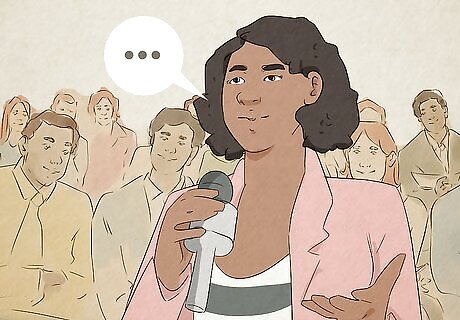
A monotone presentation won’t impress your listeners. Instead, try adjusting your volume and pitch, especially when you’re trying to nail a point with the audience. Changing things up will make your presentation even more dynamic and interesting, and will motivate your audience to pay attention. Speak more loudly when you’re trying to hit a point home with the audience. Wait a few seconds if you're making a major statement in your presentation. The pause really adds some emphasis.
Use confident body language.
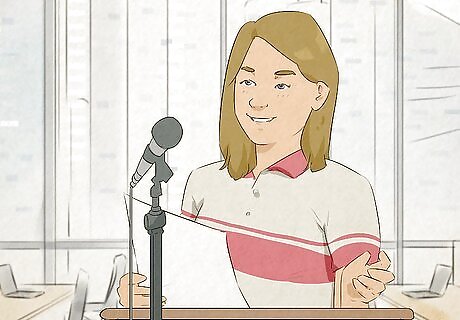
Good body language helps the audience take you seriously. Stay relaxed and try to smile throughout your presentation. Also, try to nip any nervous habits in the bud, like tapping your fingers or rocking back and forth. These might distract your audience members. Here are some simple ways to improve your posture: Stand straight up with your shoulders pulled back Shift your weight to the front of your feet Drape your arms loosely at your sides
Make eye contact.

Focus on 5-6 people from all around your audience. Do a quick scan through your presentation space to get a feel for your audience. Make a mental note of any especially friendly, engaged faces in the background. As you present, try making eye contact with these people—it will make you look much more professional and engaged. Try making eye contact with people around different parts of your presentation space, rather than looking in one direction the entire time.
Accept your nerves instead of fighting them.

There’s nothing wrong with feeling nervous before a presentation. You’re not the first person to be nervous, and you definitely won’t be the last, either. Just take deep breaths, and use your nervous energy to fuel your presentation. Chances are, nearly everyone in the audience can relate to how you’re feeling.
Give yourself a pep talk before you go on.

Affirming “you” statements can really boost your confidence. Take a few minutes before your presentation to say some encouraging, positive remarks to yourself. Phrasing them as “you” statements can better help you cope with any nerves or stress that you’re feeling in the moment. You might say: “You’ve got this!” “You’ve put so much hard work into this presentation, and you’re going to nail it!” “You are prepared, engaging, and confident!”




















Comments
0 comment